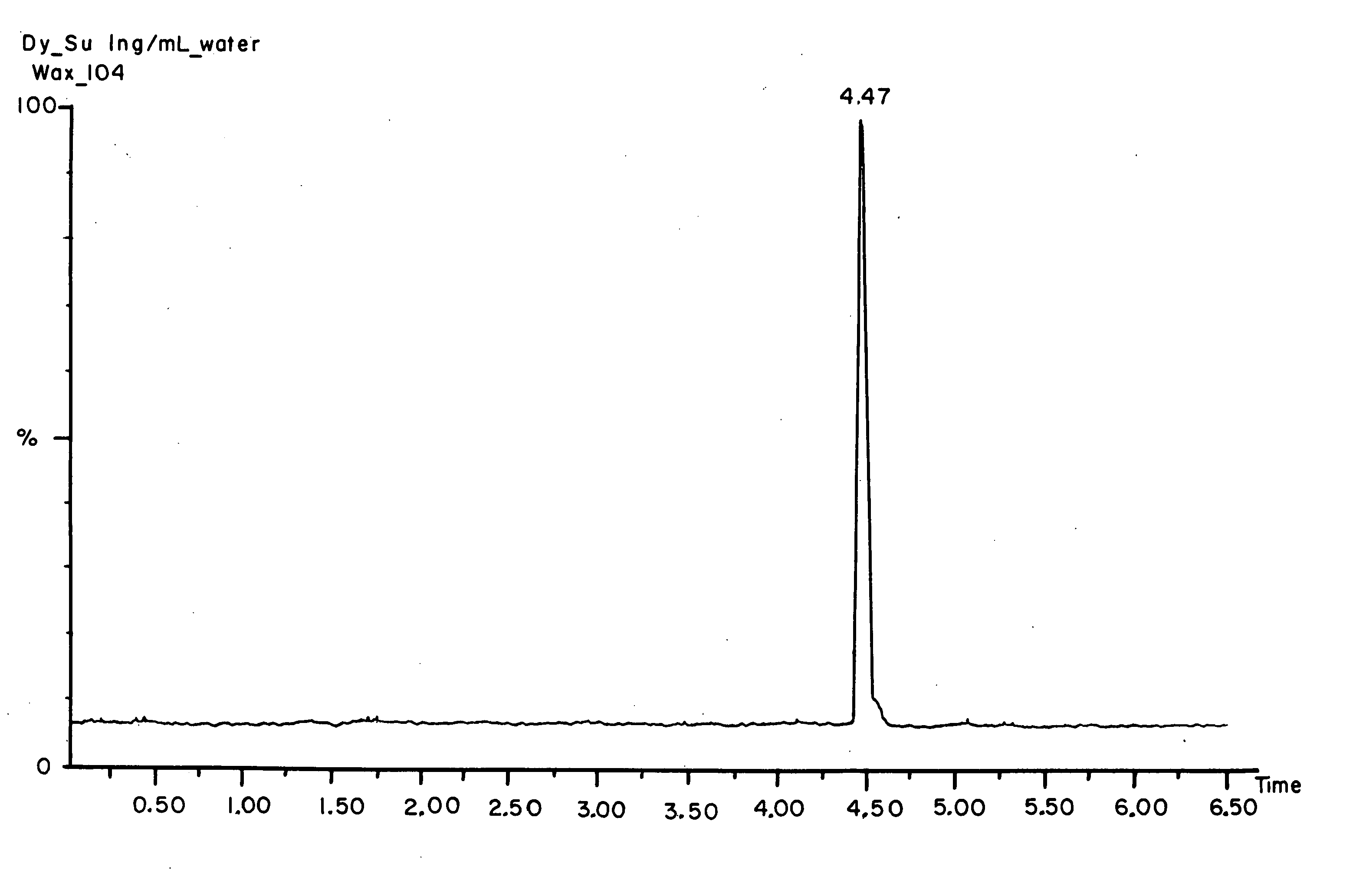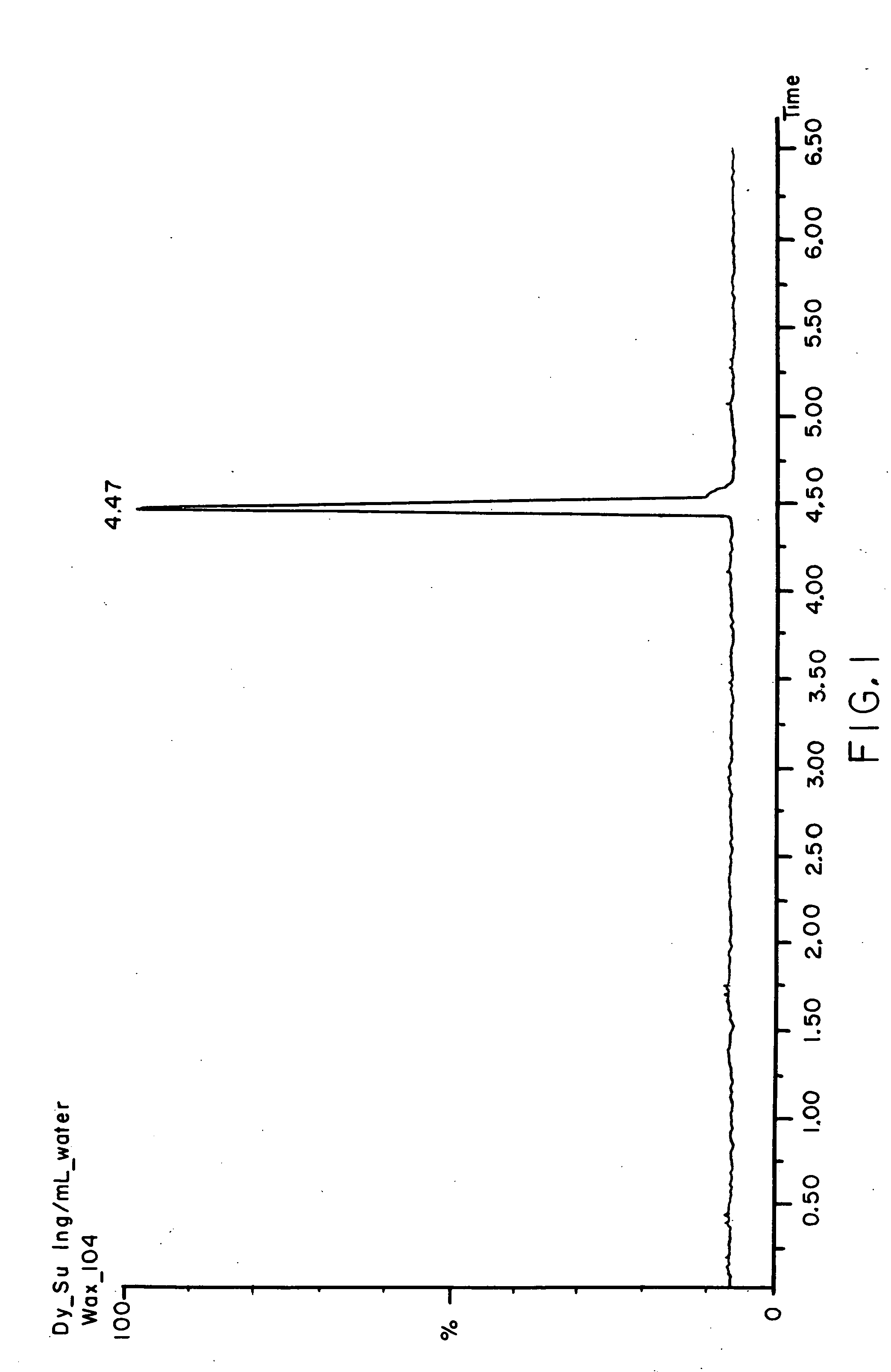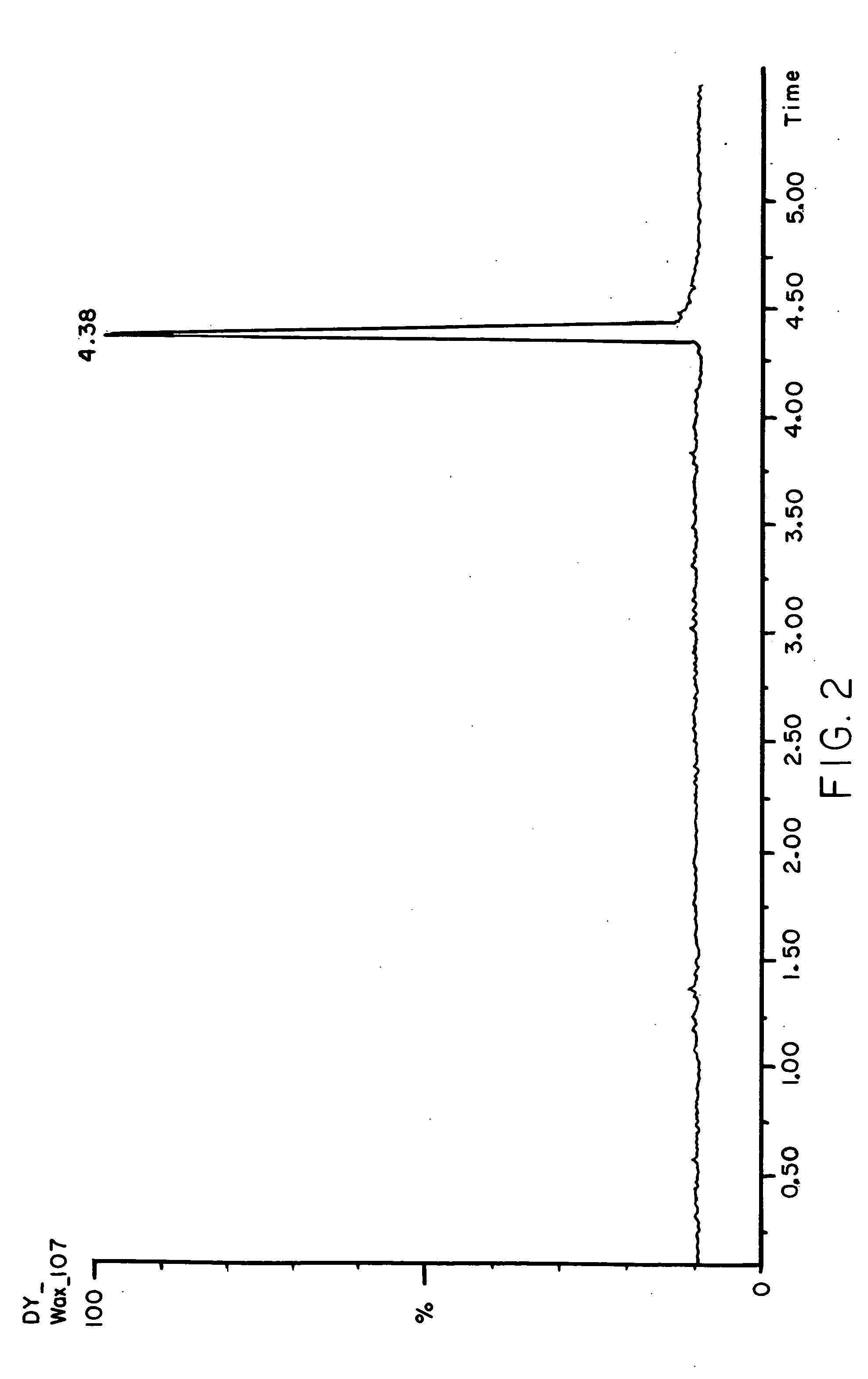Porous materials for solid phase extraction and chromatography and processes for preparation and use thereof
a technology of solid phase extraction and chromatography, which is applied in the field of chromatography, can solve the problems of further negatively affecting test methods and hplc systems, passing or leaching of particles through the retaining frit of the separation device into the sample of interest, and high system backpressure, and achieves selective capture and superior wetting characteristics
- Summary
- Abstract
- Description
- Claims
- Application Information
AI Technical Summary
Benefits of technology
Problems solved by technology
Method used
Image
Examples
example 1
[0115] To a 3000 mL flask was added a solution of 5.0 g hydroxypropylmethylcellulose (Methocel E15, Dow Chemical Co., Midland, Mich.) in 1000 mL water. To this was added a solution of 175 g divinylbenzene (DVB HP-80, Dow), 102 g N-vinylpyrrolidone (International Specialty Products, Wayne, N.J.), and 185 g azobisisobutyronitrile (VAZO 64, Dupont Chemical Co., Wilmington, Del.) in 242 g toluene (J. T. Baker, Phillipsburgh, N.J.). The 80% purity divinylbenzene above may be substituted with other hydrophobic monomers such as styrene or ethylvinylbenzene, or lower purity grades of divinylbenzene, but 80% purity divinylbenzene is preferred. The divinylbenzene is stripped with a sodium hydroxide solution prior to use in the normal way. The N-vinylpyrrolidone above may be substituted with other hydrophilic monomers such as N-vinylacetamide, N-vinylpyridine, methacrylate, methyl methacrylate, vinyl acetate, acrylamide, methacrylamide, but N-vinylpyrrolidone is most preferred.
[0116] The resu...
example 2
[0117] Poly(divinylbenzene-co-N-vinylpyrrolidone), OASIS® HLB, obtained from Waters Corp., Milford, Mass., was derivatized with hydrochloric acid (12 Molar, 36.5-38%, A.C.S. reagent, J. T. Baker, 9535-03, Phillipsburgh, N.J.) and paraformaldehyde (95%, Aldrich Chemical, 15,812-7, Milwaukee, Wis.). A three-necked, round-bottom flask was fitted with a thermometer, agitator, condenser and reactor temperature control system. Hydrochloric acid was introduced into the flask. In some cases, water was added to the flask prior to hydrochloric acid addition in order to dilute the acid concentration to below 12 M. Then, the agitation and the temperature control were started. The agitator was a ground-glass shaft fitted through the proper Teflon bearing into the center opening atop the flask. The Teflon paddle was single-bladed. The agitation rate was adjusted to ensure adequate mixing. The poly(divinylbenzene-co-N-vinylpyrrolidone), OASIS® HLB, was charged. Next, the paraformaldehyde was charg...
example 3
[0118] Chloromethylated poly(divinylbenzene-co-N-vinylpyrrolidone) porous materials, prepared as described in Example 2, were reacted with the following amines (all purchased from Aldrich Chemical, Milwaukee, Wis.): Piperidine (PP), piperazine (PZ), N-methylpiperazine (MPZ), N-methylbenzylamine (MBZ) and morpholine (M). A general procedure is provided below. Reagent amounts, reaction conditions, and the resultant loading of amine groups are listed in Table 2.
[0119] A 250 mL, three-necked, round-bottom flask was fitted with a thermometer, agitator, condenser and reactor temperature control system. The amine was introduced into the flask, and the agitation and the temperature control were started. In the case of Examples 3b and 3g, the reaction suspension also included a charge of water. The agitator was a ground-glass shaft fitted through the proper Teflon bearing into the center opening atop the flask. The Teflon paddle was single-bladed. The chloromethylated poly(divinylbenzene-co...
PUM
| Property | Measurement | Unit |
|---|---|---|
| diameter | aaaaa | aaaaa |
| diameter | aaaaa | aaaaa |
| diameter | aaaaa | aaaaa |
Abstract
Description
Claims
Application Information
 Login to View More
Login to View More - R&D
- Intellectual Property
- Life Sciences
- Materials
- Tech Scout
- Unparalleled Data Quality
- Higher Quality Content
- 60% Fewer Hallucinations
Browse by: Latest US Patents, China's latest patents, Technical Efficacy Thesaurus, Application Domain, Technology Topic, Popular Technical Reports.
© 2025 PatSnap. All rights reserved.Legal|Privacy policy|Modern Slavery Act Transparency Statement|Sitemap|About US| Contact US: help@patsnap.com



